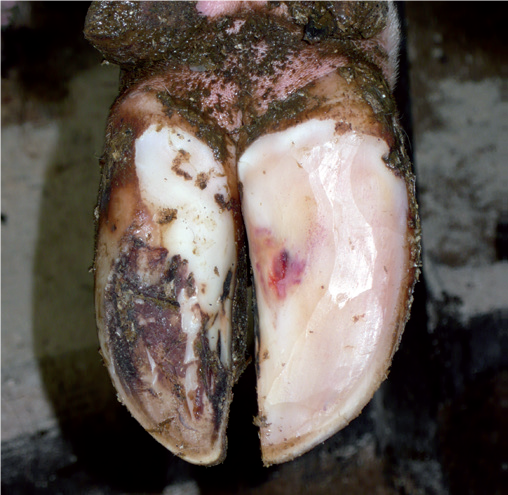- Home
- Knowledge library
- Lesions causing non-infectious lameness in dairy cattle (PhD)
Lesions causing non-infectious lameness in dairy cattle (PhD)
Summary
Summary
The effects of lameness are wide ranging; reducing cow welfare, milk yield, and fertility and significantly increasing costs on farm. Given the substantial numbers of affected cows, it is not surprising that lameness was listed as the top welfare challenge facing the cattle industry. Over 90% of lameness cases are in the foot, with a large proportion caused by non-infectious claw horn disruption lesions (CHDL’s). The term CHDL includes sole ulcers, sole haemorrhage and white line disease. Despite their importance, how these lesions develop is not yet fully understood.
About this project
Aims and Objectives
This project aims to evaluate key factors that underlie or predispose to the development of claw horn disruption lesions in dairy cows by examining foot anatomy and structure, fat mobilization, metabolic stress and the influence of immune and hormonal profiles around calving and in the early lactation period using repeated measurements on a large number of Holstein cows and advanced statistical analysis.
Related resources


